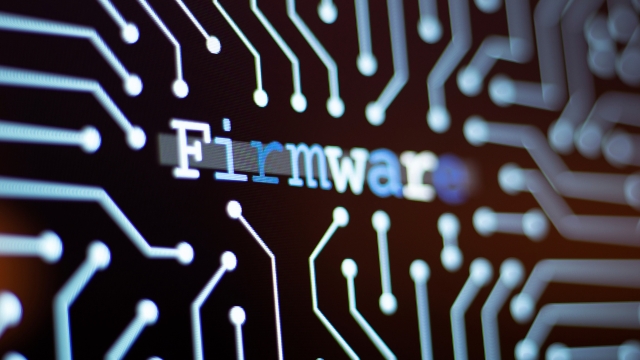Firmware, the essential software embedded in hardware, plays a crucial role in controlling devices from simple appliances to complex industrial machinery. Understanding the nuances of firmware development is paramount for engineers and developers looking to create robust and efficient embedded systems. This article explores the key aspects of firmware coding in 2024, covering essential languages, tools, and best practices. We’ll explore the various stages of development and delve into common challenges and solutions. Get ready to embark on a journey into the heart of device intelligence.
Choosing the Right Language for Firmware Development
Selecting the appropriate programming language is a foundational decision in firmware development. The choice often depends on the target hardware, performance requirements, and existing codebases. Here’s a look at some popular options:
- C: A foundational language offering direct memory access and high performance, making it ideal for resource-constrained environments.
- C++: An object-oriented extension of C, enabling modularity and code reusability for larger, more complex firmware projects.
- Rust: A modern systems programming language emphasizing safety and concurrency, gaining traction for its robust memory management and security features.
- Python: While not typically used for performance-critical sections, Python is useful for scripting, testing, and rapid prototyping of firmware applications.
Essential Tools and Environments
Firmware development relies on a suite of specialized tools to facilitate coding, debugging, and testing. These tools streamline the development process and ensure the quality of the final firmware.
- Integrated Development Environments (IDEs): Platforms like Eclipse, Visual Studio Code, and IAR Embedded Workbench provide code editing, compilation, and debugging capabilities.
- Compilers and Toolchains: GCC, ARM Compiler, and others translate high-level code into machine-executable instructions specific to the target hardware.
- Debuggers: GDB, J-Link debuggers, and on-chip debuggers allow developers to step through code, inspect memory, and identify errors.
- Emulators and Simulators: These tools enable testing and debugging of firmware without requiring physical hardware.
Key Stages in Firmware Development
Developing firmware involves a structured process, typically encompassing the following stages. The success of the project often hinges on thorough planning and execution at each stage.
| Stage | Description | Key Activities |
|---|---|---|
| Requirements Analysis | Defining the functionality and performance requirements of the firmware. | Gathering specifications, identifying constraints, and creating a requirements document. |
| Design | Designing the architecture and software components of the firmware. | Creating UML diagrams, defining data structures, and planning the overall system design. |
| Implementation | Writing the code for the firmware modules and integrating them into the system. | Coding in the chosen language, adhering to coding standards, and performing unit testing. |
| Testing and Debugging | Verifying the functionality and performance of the firmware. | Running unit tests, integration tests, and system tests, and debugging any identified issues. |
| Deployment | Flashing the firmware onto the target hardware. | Using flashing tools and ensuring the firmware is properly installed on the device. |
| Maintenance | Providing ongoing support and updates for the firmware. | Fixing bugs, adding new features, and releasing firmware updates. |
Coding Best Practices for Robust Firmware
Adhering to coding best practices is crucial for creating reliable and maintainable firmware. These practices minimize bugs and simplify future modifications.
- Use defensive programming techniques: Validate input data and handle potential errors gracefully.
- Follow coding standards: Maintain consistent code formatting and naming conventions.
- Write clear and concise code: Avoid complex or convoluted logic.
- Document your code: Explain the purpose of functions, variables, and algorithms.
- Use version control: Track changes to your code and facilitate collaboration.
FAQ: Common Questions About Firmware Coding
Here are answers to some frequently asked questions about firmware development:
- Q: What is the difference between firmware and software?
- A: Firmware is a specific type of software that is embedded in hardware and controls its basic functions. Software is more general and can run on various platforms.
- Q: How do I choose the right microcontroller for my firmware project?
- A: Consider factors such as processing power, memory, peripherals, power consumption, and cost when selecting a microcontroller.
- Q: What are some common challenges in firmware development?
- A: Challenges include resource constraints, real-time requirements, debugging embedded systems, and ensuring security.
- Q: How important is security in firmware development?
- A: Security is extremely important. Firmware vulnerabilities can be exploited to compromise devices and systems, so security considerations must be integrated throughout the development process.
The Future of Firmware Development
The field of firmware development continues to evolve, driven by advancements in hardware and software technologies. The increasing demand for smart devices and the Internet of Things (IoT) is fueling innovation in embedded systems. We can expect to see greater adoption of secure coding practices and increased use of cloud-based development tools. Furthermore, the rise of artificial intelligence (AI) and machine learning (ML) will likely lead to more intelligent and adaptive firmware solutions. As technology progresses, the role of firmware in shaping the functionality and performance of electronic devices will only become more prominent.

